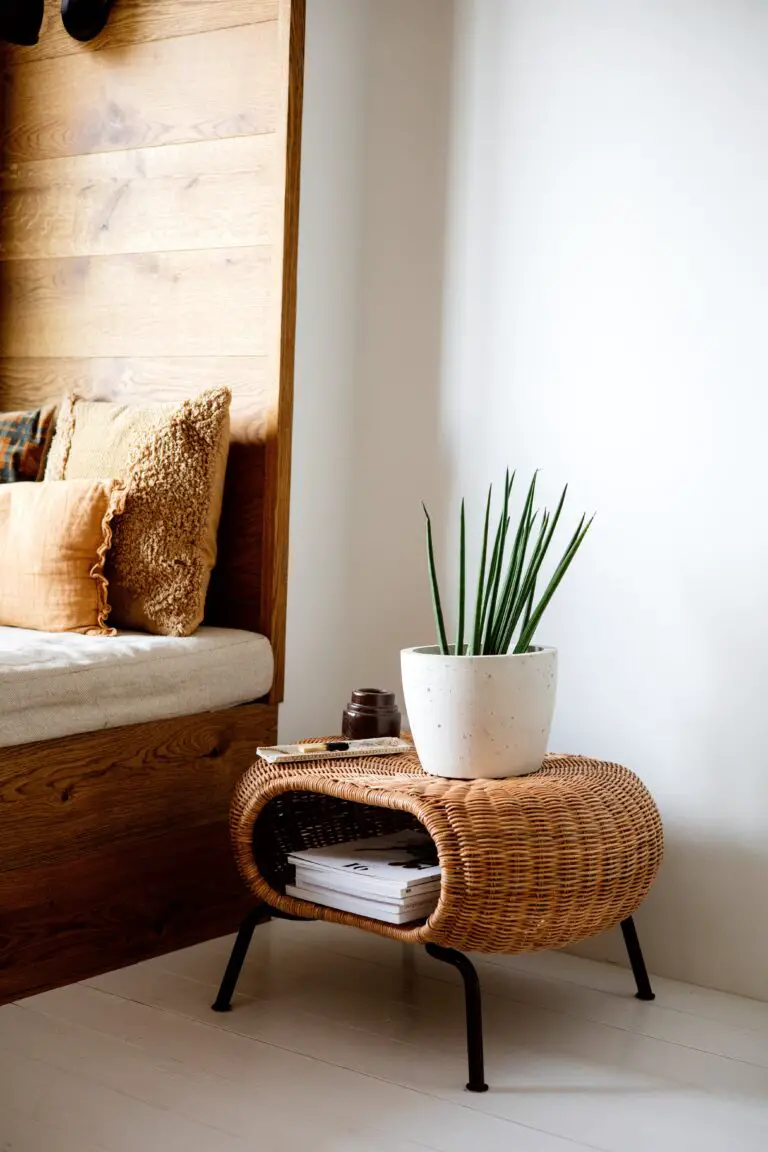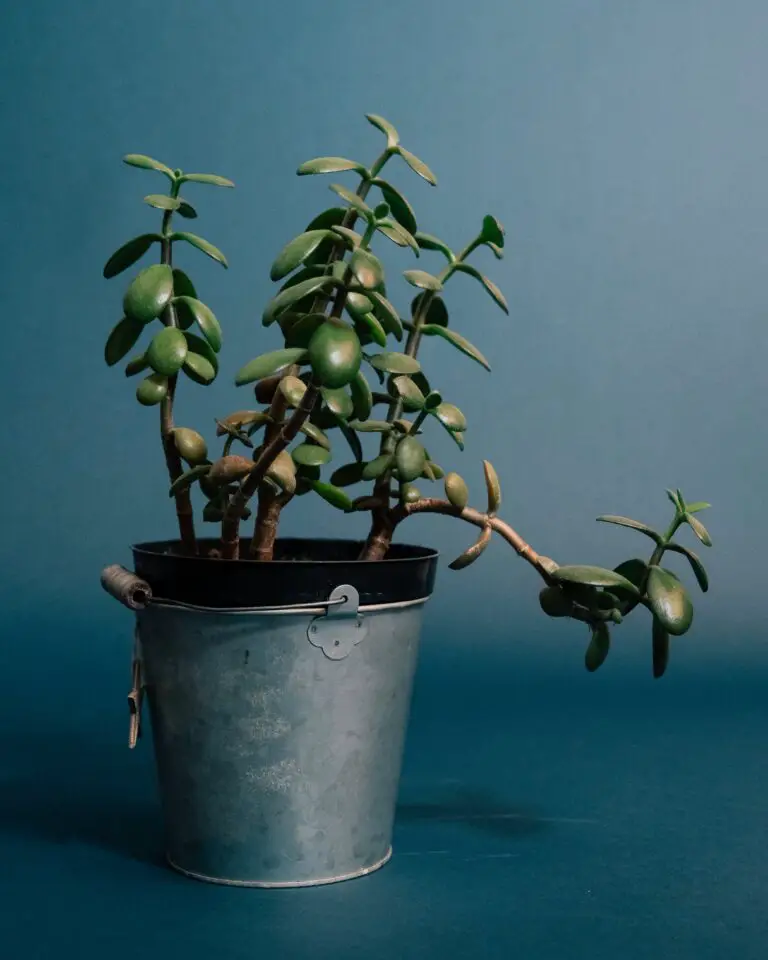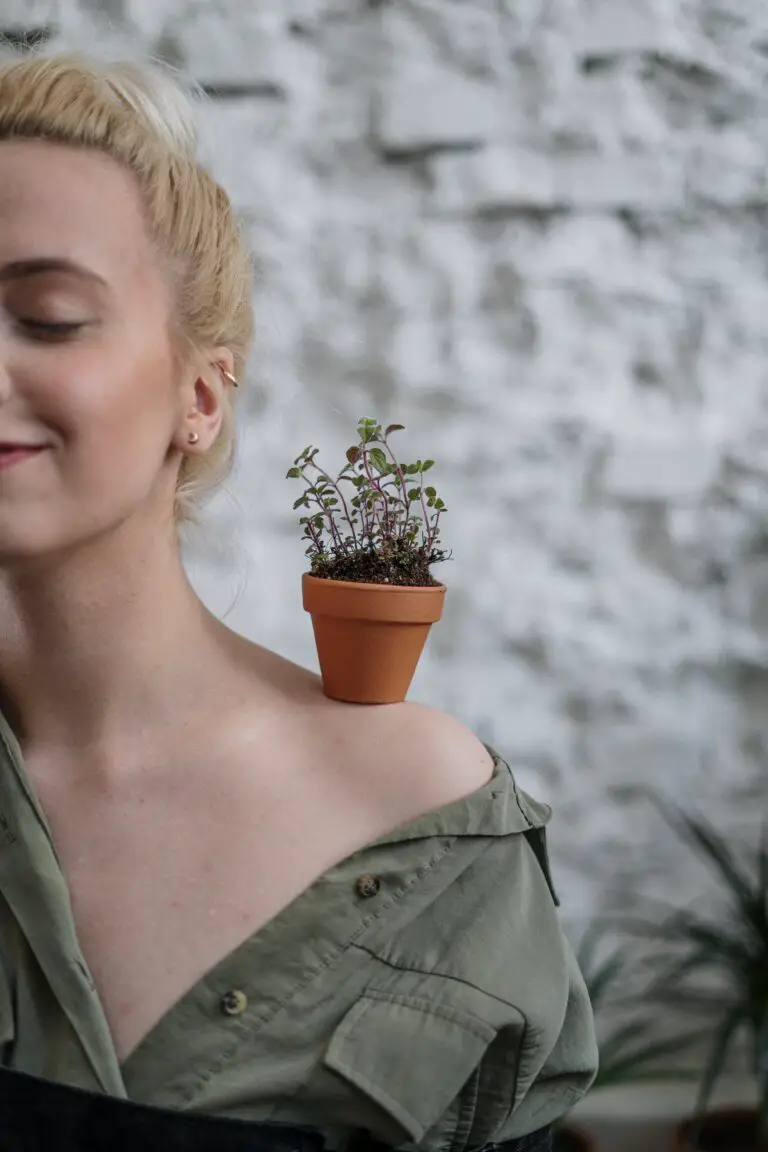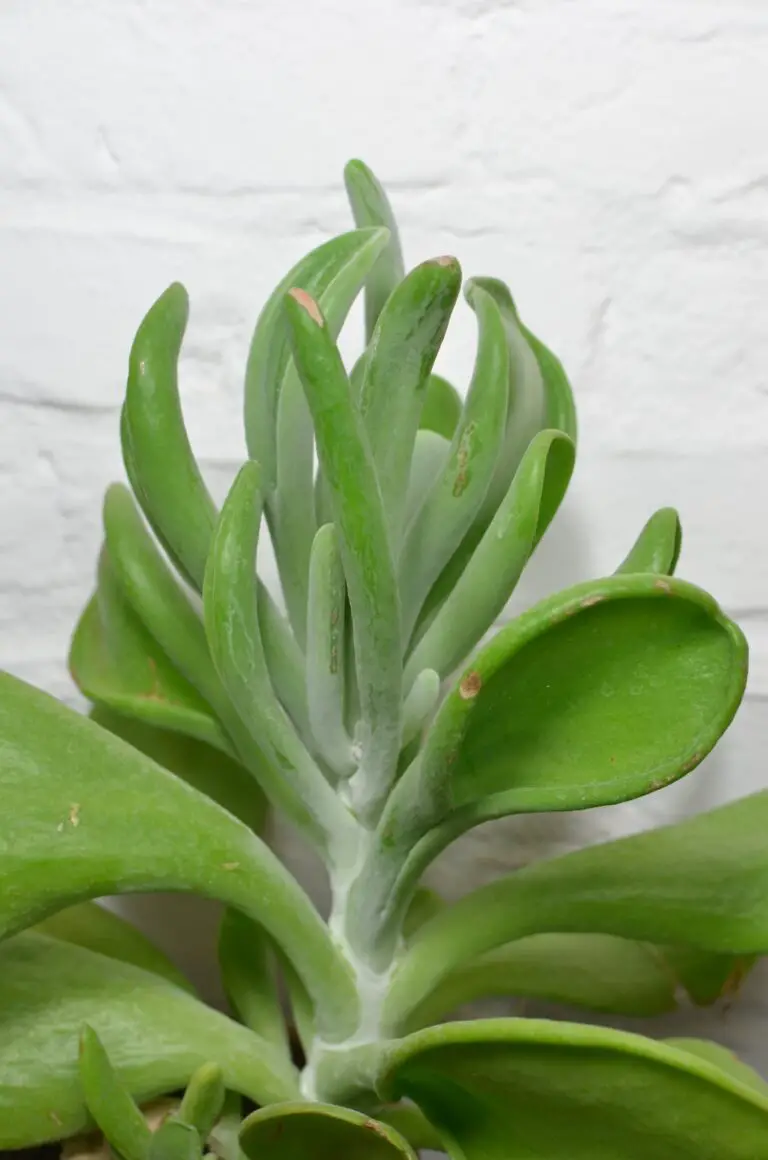Introduction to Crassula Plants
Welcome to the enchanting world of Crassula, the beloved genus that has green-thumbed enthusiasts and indoor plant novices alike utterly bewitched. These succulent stunners, renowned for their ease of care and visually captivating forms, are the quintessential houseplants adorning windowsills and desks in homes around the globe. But what is it about Crassula plants that make them such a mainstay in the realm of indoor botany?
Picture this: A sleek, modern living room, sunlight pouring in, casting a warm glow on a collection of Crassula varieties – each one a masterpiece of nature’s design. You might spot the classic Crassula ovata, also known as the ‘Jade Plant’, boasting its vibrant, jade-green leaves that are said to symbolize growth and renewal. Or perhaps you’ll be drawn to the delicate intricacy of the Crassula muscosa, its tightly woven leaves resembling a verdant chainmail suit worthy of a fairy tale knight.

From the artfully stacked leaves of ‘Pagoda’ Crassula varieties, which seem to spiral upwards like ancient temple spires, to the soothing symmetry of the ‘Hobbit’ and ‘Gollum’ with their otherworldly, tubular leaves, Crassula plants offer an aesthetic appeal that is diverse as it is delightful. It’s this variety that not only adds a visual punch to our indoor spaces but also provides an effortless dose of nature’s tranquility to our hectic lives.
But as we delve into our verdant reverie, one question lingers: is Crassula toxic? While they grace our spaces with their serene beauty, it’s essential to understand the nature of the plants we bring into our homes – for the safety of our families, our children, and our furry companions. For an in-depth exploration of Crassula plant care, including tips on how to ensure your green companions thrive without harm, why not dig a little deeper? Stay tuned as we unlock the secrets behind the alleged toxicity of the captivating Crassula.
Understanding Plant Toxicity
So, you’ve heard the terms “toxic plant” bandying about, and if you’re like most, you’d rather not turn your home into a botanical booby trap! But what does it really mean for Crassula, or any plant for that matter, to be “toxic”? Let’s slice through the foliage and get to the root of this prickly issue.
When we say a plant is toxic, we’re talking about its ability to cause harm when ingested or, in some cases, even when touched. This goes for humans and our furry comrades alike. For instance, certain plants can be particularly perilous to pets, causing everything from mild irritation to severe health crises. It’s a jungle out there, and some plants pack a punch with noxious elements hidden in their leaves, flowers, or sap.
Recognizing the Red Flags
What’s the harm, you ask? Imagine taking a quiet stroll through your garden, admiring your greenery, when Fido decides that leafy shrub looks like a tasty treat. Fast forward a few hours, and you might notice your four-legged friend has become lethargic, is vomiting, or showing signs of respiratory distress. That’s toxicity in action. And it’s not just pets; inquisitive toddlers are equally at risk, often unable to resist the allure of a brightly colored berry.
Toxic symptoms range from the subtle to the severe: a slight tingle on the skin, an itchy rash, or, in more alarming cases, difficulty breathing, convulsions, and worse. It all depends on the plant and the poison it wields. Each toxic trooper has its own arsenal, from oxalates that wage war on the kidneys to saponins that soap up trouble for the digestive system.
To catch a glimpse of what plant toxicity looks like in action, take a peek at this video:
Knowledge is power, and recognizing these symptoms can be a lifeline. So, while your green sanctuary is no doubt a source of joy, it pays to be a bit of a plant detective. Keep an eagle eye on your leafy lodgers and familiarize yourself with their profiles — especially if they’re known to have a toxic temperament.
Is Crassula Toxic to Pets?
It’s a question that’s bound to emerge for pet owners who love to deck their homes with the elegance of houseplants: can these green companions pose a danger to our furry friends? Specifically, we’re zeroing in on Crassula, a popular succulent that’s charmed its way onto many a windowsill. But is beauty only skin deep, or is there a hidden threat lurking in those luscious leaves? Let’s explore the impact of Crassula on pets—especially our beloved cats and dogs—and shed some light on the toxicity concerns.

Imagine this: a sunny afternoon, your cat is stretching lazily among the array of potted plants by the window, and your dog wags its tail through the leafy bower. It’s an idyllic scene, but one that could lead to real trouble if your pet chews on a Crassula leaf. Reports suggest that components within this hardy South African succulent could cause reactions in our pets due to an unknown agent within its sap. While the occasional nibble might not spell disaster, causing only mild irritation at most, it’s definitely safer to err on the side of caution. Houseplant Central sheds more light on which succulents are best kept away from curious pets.
Clinching the evidence, the American Society for the Prevention of Cruelty to Animals (ASPCA) has listed certain members of the Crassulaceae family as toxic to both felines and canines. And while no pet parent plans for their animal companion to snack on a succulent, accidents happen. Anecdotes abound of dogs with a penchant for greens ending up slightly worse for wear after a surreptitious gnaw on a Crassula. With that in mind, it’s prudent to take measures to prevent any potential plant-pilfering by your four-legged pals. For insightful reads on how to keep your pets safe around houseplants, consider perusing some safety tips for peace of mind.
So, while Crassula plants can be a splendid addition to your indoor green haven, it’s essential to consider their placement and the accessibility for pets. By keeping the lines clear between decoration and diet, you can ensure a healthy coexistence for both your photosynthesizing friends and your cherished companions.
Is Crassula Toxic to Humans?
Imagine this: you’ve just brought home a lush Crassula plant, its vibrant green leaves brightening up your space. But as you gaze at your new green friend, a worrying thought crosses your mind—could this seemingly innocent plant pose a risk to you or your family? Let’s dive into the heart of the matter and uncover the truth about Crassula’s toxicity to humans.

When it comes to children and adults, the primary concern with Crassula is the potential for skin irritation. Though not as notorious as poison ivy, some people might experience a not-so-pleasant reaction if their skin comes into prolonged contact with the plant’s sap. It’s a rare occurrence, but imagine the surprise of developing a rash after repotting your Crassula without gloves—definitely not the kind of bonding you had in mind!
But what happens if someone takes a nibble of a Crassula leaf? While it’s uncommon for humans to munch on houseplants, kids and pets are known for their curiosity. Ingesting parts of a Crassula plant might not send you rushing to the ER, but it could lead to some gastrointestinal upset. Think of it as nature’s way of saying, “I’m not a snack!”
Fortunately, severe complications from interacting with Crassula are few and far between. Nonetheless, it’s wise to exercise caution, especially if you have little ones or pets roaming around. Want to explore more about safe houseplants? There’s a whole world of greenery that not only coexists peacefully with humans but can also spruce up your living space without the worry.
While Crassula may give us a reason to pause and consider plant safety, it’s also a reminder of the delicate balance in our homes. With a little knowledge and care, we can enjoy the beauty and benefits of Crassula without the worry. So, go ahead, glove up and plant on—just keep an eye on the curious kiddos and fur babies!
Dealing with Crassula Exposure
Let’s cut right to the chase: if you or someone around you is hit with the suspicion of Crassula poisoning, it’s crucial to stay calm and react swiftly. Suppose little Johnny decided the shiny, jade-like leaves were candy – what’s next? First, don’t panic. Assess the situation and understand the steps you need to handle this green (but possibly mean) emergency!

The first order of business is to gently prevent any more leaves from being consumed. Next, even if there are no immediate symptoms, give the mouth a good rinse with water — it’s simple and can wash away any remaining plant particles. Proceed to remove any plant bits from the mouth. However, don’t induce vomiting unless instructed by a professional; it can do more harm than good.
First-Aid Tips for Crassula Poisoning
Let’s dive into our first-aid kit of tips for suspected Crassula poisoning. Remember, information and preparation are your allies here. Make sure to:
-
Remove any plant material from the individual’s mouth.
-
Offer water to wash out the mouth but refrain from giving anything to eat or drink if the person is vomiting or has difficulty swallowing.
-
Watch out for symptoms like nausea, vomiting, or diarrhea, and keep a record of them.
-
Keep a piece of the plant for identification – it’s a key clue for healthcare providers.
Now brace yourself; while waiting for help, keep the affected person comfortable and under observation. If symptoms escalate, like difficulty breathing or changes in consciousness, treat it as a medical emergency.
When to Dash to the Doc?
Remember, while Crassula plants are fetching to the eye, they can be foul play when ingested. If symptoms appear severe or you’re in doubt about the severity of the situation, it’s better to be safe than sorry. Pick up the phone, dial your local poison control center or dash to the nearest ER. It’s essential to trust the experts with the well-being of you or your loved one.
After all, what’s a few moments of your time compared to the peace of mind that you’ve taken action against a Crassula scare? So keep these pointers tucked in your back pocket – they might just save the day!
Choosing Safe Houseplants: Tips and Alternatives
When it comes to creating a green oasis in your haven, the last thing you want is to inadvertently introduce a toxin to your tranquil space. With the popularity of Crassula, commonly known as the Jade Plant, sky-rocketing among houseplant aficionados, concerns about its potential toxicity have emerged. But fear not! With a sprinkle of knowledge and a pinch of precaution, you can handpick houseplants that are safe for everyone in your household. Let’s roll up our sleeves and dig into the nitty-gritty of picking non-toxic green companions.
Spot the Safe Sprouts: Houseplant Selection 101
Whether you’re a first-time plant parent or a seasoned botanist, identifying non-toxic plants is a crucial skill. Start by doing your due diligence; a quick search on the trusty internet, or a chat with your local nursery maven can save you from a faux pas. Remember, looks can be deceiving—the lacy leaves of a Fern might look delicate and benign, but are they safe for your curious cat or teething toddler? Cross-reference your findings with credible sources and make informed decisions.

Turning Over a New Leaf: Non-Toxic Plant Alternatives to Crassula
If you find that Crassula doesn’t jive with your safe-plant policy, fret not! Mother Nature offers a cornucopia of alternatives that won’t raise your blood pressure. Take the vibrant Spider Plant, a powerhouse of air purification and a paragon of non-toxicity. Or consider the resilient Boston Fern, a humidifier in its own right that is completely benign. These green gems are just the tip of the iceberg when it comes to pet-friendly and child-friendly options.
Inviting safe plants into your home is more than a decor choice—it’s a declaration of love and protection for your loved ones. For instance, the peppy Peperomia gains the upper hand with its wide variety of non-toxic species. It’s almost as if it’s waving its petite leaves at you, ushering you into a worry-free world of greenery. Moreover, the hearty African Violet offers a visual feast with its lush blooms and is equally non-toxic!
Choosing non-toxic houseplants isn’t just a thoughtful gesture—it’s a form of art. Consider it a canvas where safety and aesthetics blend seamlessly. The Mighty Bamboo Palm stands tall as a beacon of safety, offering lush green fronds without a hint of toxicity. Mix and match these safe species to create a botanical tapestry that speaks volumes about your care and consideration.
Every home is unique, and so is every plant. Keep in mind that the perfect plant for your friend’s sun-drenched living room might not thrive in your cozy, low-light nook. Observing your space’s light, humidity, and temperature will help you zero in on a compatible chlorophyll companion that’s safe for all.
In conclusion, selecting non-toxic houseplants is a joyful journey that ensures peace of mind. As you cultivate your indoor garden, remember to look beyond the aesthetic. By embracing plants that pose no risk to your household’s wellbeing, you’re not just decorating your space—you’re enriching it with life, safely and responsibly. Onward to a greener, safer home!
How to Safely Display Crassula in Your Home
Crassula, the charming and hardy succulent, has made its way into the hearts and homes of many plant enthusiasts. Despite its popularity, the question of its toxicity often creeps into the minds of pet owners and parents. So, let’s talk about how you can showcase this green gem without putting your furry or little ones at risk!
Strategic Placement: The Key to Safety
It’s all about location, location, location! Ensuring your crassula is out of reach is perhaps the most straightforward tactic. Think ‘vertical gardening’—tall shelves and wall-mounted planters can be your best friends here. By elevating your crassula collection, you not only keep them away from curious paws and tiny hands but also add a new dimension to your decor!
Why not try hanging terrariums? They make a stunning visual statement while keeping your crassula safely ensconced in a glass bubble, like your own little floating garden. Plus, they provide a full view of the plant from all angles—talk about a win-win situation!
Teaching Moments for Kids and Training Pets
Education goes a long way! Sit down with your children and explain that some plants can be like candy for the eyes but not for the mouth. Just as they learned not to touch the stove, they can understand that not all plants are touch-friendly.
As for our furry companions, a bit of training can do wonders. Consistent commands like “leave it” coupled with positive reinforcement can teach them to admire your crassula from a safe distance. And remember, if your pets are especially persistent, consider pet-safe deterrent sprays on or around your crassula. They emit odors that pets usually find unappealing, thereby protecting your green friends without harm.
Choosing Non-Toxic Companion Plants
Another strategy is to accompany your crassula with a posse of non-toxic plants. This way, if your pet or child does happen upon your indoor garden, they are less likely to encounter something harmful. There’s a plethora of safe choices like spider plants, bamboo, and African violets that can coexist with your crassula and still create a flourishing indoor oasis.
Finally, for those who want to delve deep into the world of crassulas and pet safety, here’s a video packed with insight:
Incorporate these shots of wisdom into your plant parenting routine, and you’ll have nothing to lose but your worries. Let your crassula sparkle in your indoor landscape while preserving the sanctuary of your home for all—be it two-footed, four-pawed, or rooted in soil.
Legal and Trade Considerations
When contemplating the charm and allure of the plump leaves of Crassula plants, it’s easy to forget that these green beauties may come with a caveat. But let’s dive into something that doesn’t always make it into the everyday chatter of plant enthusiasts: the nitty-gritty of legal and trade considerations. Picture this – a succulent-filled storefront, a symphony of green, teeming with eager beaus of botany. Yet, amidst this verdant wonder, there’s a whisper of caution that comes with species like Crassula.
Why, you ask? Well, in some regions, authorities have tightened their grip on the trade of plants that could potentially turn a pet parade into a pet panic. Imagine a shiny label, catching the light, warning potential buyers that the innocent-looking plant they’re eyeing could be a mini-menace. These aren’t just guidelines; they’re regulations with roots in legal soil. Certain countries mandate clear labeling about possible toxicity, helping unassuming plant parents avert a verdant villain in disguise.

But the plot (and the pot) thickens. Trade restrictions can also come into play. Agility is the name of the game in the plant business, but nothing trips quite like a tape of red – regulation tape, that is. If a Crassula plant variety falls under the specter of being ‘potentially poisonous’, trade across borders might just hit a wall tougher than the plant’s own succulent stems. Distributors need to navigate a maze of import and export laws that could turn a simple sale into a legal labyrinth.
Real-life examples are plenty. Take it from nurseries that have faced the music for not chiming in with state regulations, or the sellers who’ve seen their green dreams pruned by import denials. Situations where a lush batch of Crassulas is sidelined, confined to its place of origin because somewhere, someone put a red flag on its green leaves. It’s a tale of trade and tribulation, my green-thumbed friends.
And if you’re thinking about going the online route, don’t forget that the digital space is just as wrapped in the tendrils of legislation. A digital storefront may have to include the same warnings as a brick-and-mortar shop to steer clear of the sticky webs of legality.
So, while the idea of adding a Crassula to your collection might be as tempting as a raindrop to its thirsty leaves, remember the possible legal entanglements. It doesn’t just stop at ‘is Crassula toxic?’ The question extends to ‘is selling Crassula a legal tangle?’ It’s the kind of insight that turns casual cultivators into savvy succulent connoisseurs.
Frequently Asked Questions
In our quest to demystify the enigma surrounding the Crassula plant and its rumored toxicity, let’s delve into some of the most commonly posed inquiries that plant enthusiasts and pet parents alike have brought to the table. By clearing the air, we aim to provide peace of mind and cultivate a harmonious coexistence between your leafy companions and your furry friends.
Are all Crassula species toxic?
First off, it’s crucial to establish that not all heroes wear capes and, likewise, not all Crassula species bear the mark of toxicity. While certain members of the Crassula genus have been known to cause a stir with their potentially harmful properties, a blanket statement about the entire clan would be hasty and misleading. Let’s not cast a shadow over the innocent ones without due cause.

Can Crassula cause allergic reactions?
Imagine brushing past a captivating patch of Crassula only to find yourself entangled in a scratchy bout of sneezes and itches. Allergic reactions are indeed a real concern for some individuals, although such instances are, thankfully, not the norm. It’s akin to how some people might react to a certain food item while others feast on it without a hitch. If you’re known to have a hypersensitive immune response, it’s wise to approach these succulents cautiously.
How can I tell if my pet has been poisoned by Crassula?
Picture your curious canine or feline embarking on an unexpected gastronomic journey with a Crassula as the dish of the day. Such mishaps do occur, and the signs to look for include gastro-intestinal maladies such as vomiting or diarrhea, and sometimes, a lethargic disposition that’s out of character for your normally sprightly pet. Spotting these symptoms early can be pivotal in steering your pet back to the safe shores of health.
Are there any non-toxic Crassula varieties?
Lest we only harp on the dangers, rest assured that there are indeed several Crassula varieties that have been given a clean bill of health and are perfectly safe to share your living space with. It’s like stumbling upon a hidden gem in a minefield – a delightful surprise that reaffirms the existence of non-toxic options for those who seek them. Be sure to conduct thorough research or consult with a botanist to pick the right ally from the Crassula family.



